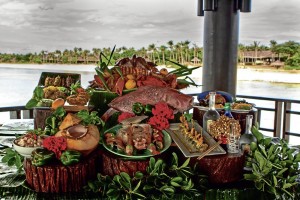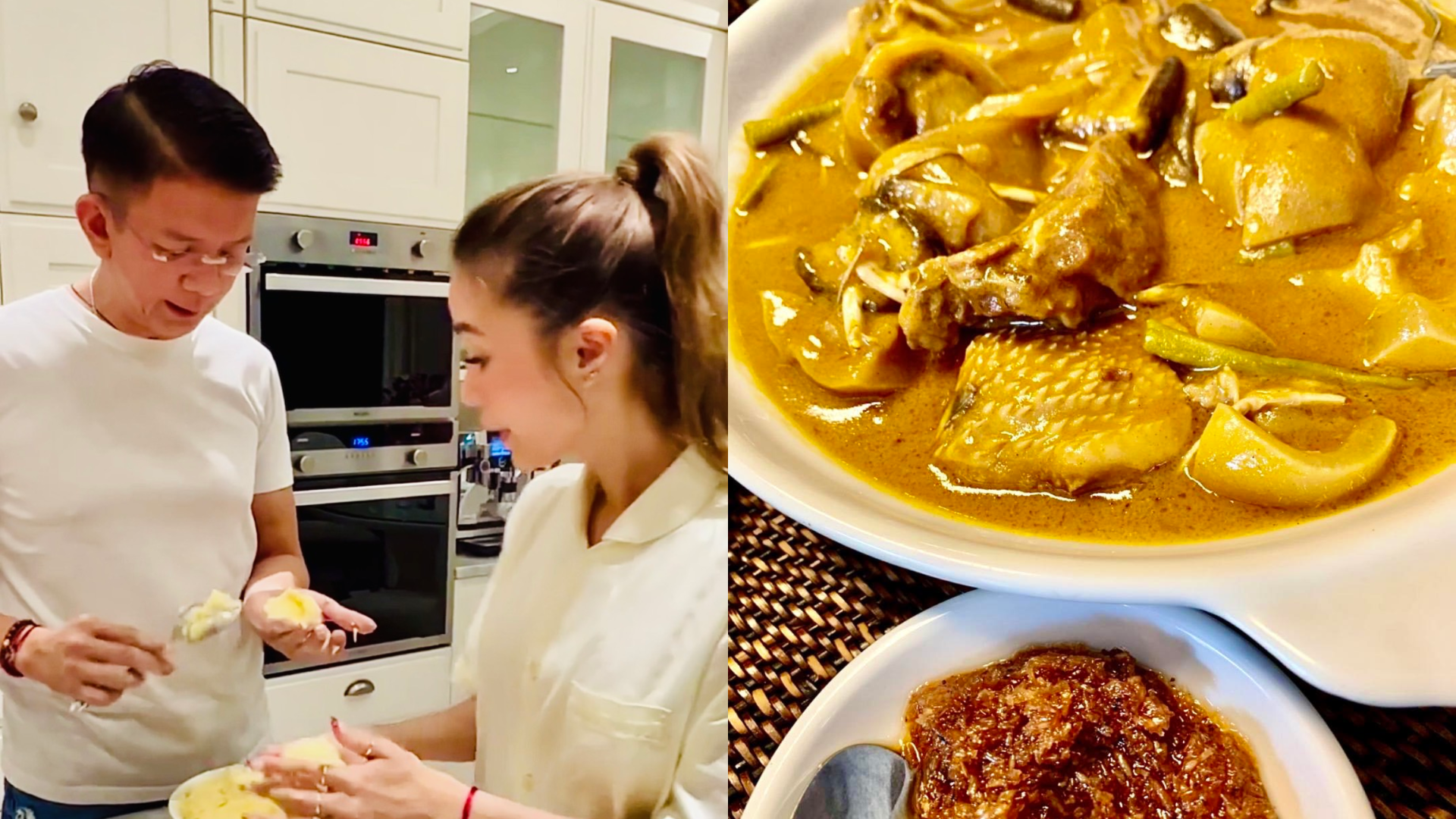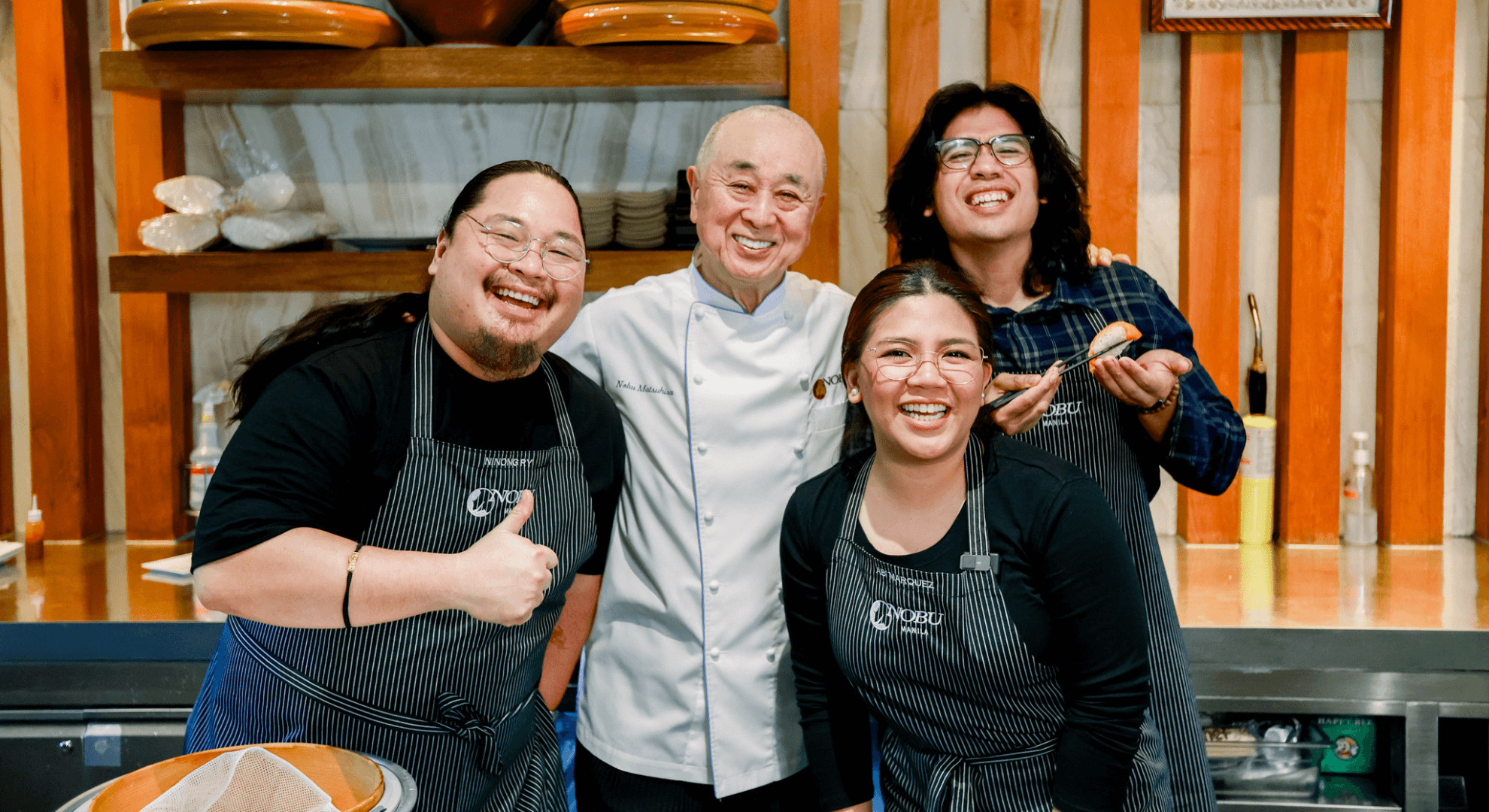
Just 25 minutes away from Manila by plane is the island paradise of Balesin, Quezon, a 500-ha private membership resort.
Not many places offer such a great diversity of attractions for lovers of both land and sea. Balesin combines the ruggedness of the great outdoors and the comfort and luxury of pampering indoors. It is an island that seems to have been built out of one’s imagination, where a visit is best described as slipping in and out of a dream.
The island has seven themed villages, five of which are now functional and ready to cater to your every whim. The Balesin clubhouse alone is enough to make one’s stay pleasurable, especially if you fancy fantastic Japanese food.
I’ve noticed that everyone who comes back from the island raves about Sakura Restaurant’s chef Edo San, who is a whiz. His sushi, sashimi and teppan creations are reason enough to keep visiting the island, but most particularly his aburi (grilled) sushi, which are phenomenal.
The best way to enjoy chef Edo San’s food is to sit back and have him serve you. That would usually mean a meal made out of what he has swimming in his aquarium.
Balesin Village is home to a huge, bewitching banyan (balete) tree. It is also where you will find the Balesin Sala, the island’s Filipino restaurant. The beach is over 4.2 km long, according to literature from the island and The Relic Bar (an old poolside bar), the oldest surviving structure from the old Balesin resort.
Balinese village
Further down the island is the Balinese Village where you can have a glimpse of a miniature version of the rice terraces, inspired by those in Bali but planted with highland-variety rice grown in Banawe.
The village restaurant Bali Warung serves authentic Indonesian dishes. It is authentic in both food and feel, adorned with intricate woodcarvings flown in from Ubud. Prominently displayed are shadow puppets that further add character to the already impressive interior. It is interesting to note that the island is home to some 38 carvers from the Mountain Province.
Near the water is Nusa Dua Bar, decked with comfortable sofas where you can sit, enjoy a drink and nibble on krupuk.
After Bali, Greece. Mykonos is Balesin’s Greek Village. The view of the ocean with the striking royal blue and white villas is what makes Mykonos a picture-perfect destination.
The Mykonos Taverna, a restaurant embellished with ceramics flown in from Greece, is beautiful. It serves world-class Greek food developed by acclaimed chef Thannisis, from Rhodes. The chef’s specialties include mezes, best enjoyed with ouzo (anise liquor). Not to be missed is the grilled lamb for main course.
If you wish to bask in the sun and enjoy a great souvlaki (Greek-style barbecue) then head for the Cove Deck, a sun lounge above the taverna that has four separate Jacuzzis and a Souvlaki Bar (BBQ-grilled meat, Greek-style).
From Mykonos, you can head to Phuket, situated along the Island’s south tip. Phuket Sala serves Thai food with a fantastic view of the infinity pool lined with coconut trees and Buddhas.
Currently being constructed are the villages of Toscana, St. Tropez and Costa del Sol.
Amazing
It is amazing how one place can have so many faces, where no two experiences will ever be alike. And though we travel to the destination with company, we come home with memories that are exclusively ours, carrying with us a piece of the island in our heart, mind and belly.
Here are two of Balesin’s most popular dishes. Though simple, the flavors of the dishes give an accurate taste of experience. The secret is in the use of only the freshest ingredients. On the island, the buko is freshly picked for the binakol, which makes all the difference.
Thanks to Bollie Bolton, Balesin’s GM, for sharing these recipes with us.
Binakol
30 g lapu-lapu or cream dory fillet
10 g onion
10 g tomato
1 pc buko
1 tbsp sugar
Pinch of salt and pepper
1. Cut the fish fillet, onions and tomatoes into small cubes.
2. Boil the tomato and onion cubes in the buko juice. After five minutes, add the fish cubes.
3. Season with salt, pepper and sugar.
4. Serve in a buko shell.
Kinilaw na Tanguigue
30 g tanguigue fillet
10 g onion
10 g tomato
10 g ginger
2 pcs sili labuyo
5 pcs calamansi
½ c vinegar
Pinch of salt and pepper
Sugar
1. Clean tanguigue fillet and take out the bones and the veins.
2. Cut the tanguigue fillet into ½-in cubes.
3. Slice tomato, onion ginger and chili into very thin strips.
4. Mix all the ingredients and season with salt, pepper and a pinch of sugar.
5. Garnish with whole chili.
For more information on Balesin, visit https://www.balesin.com.












































